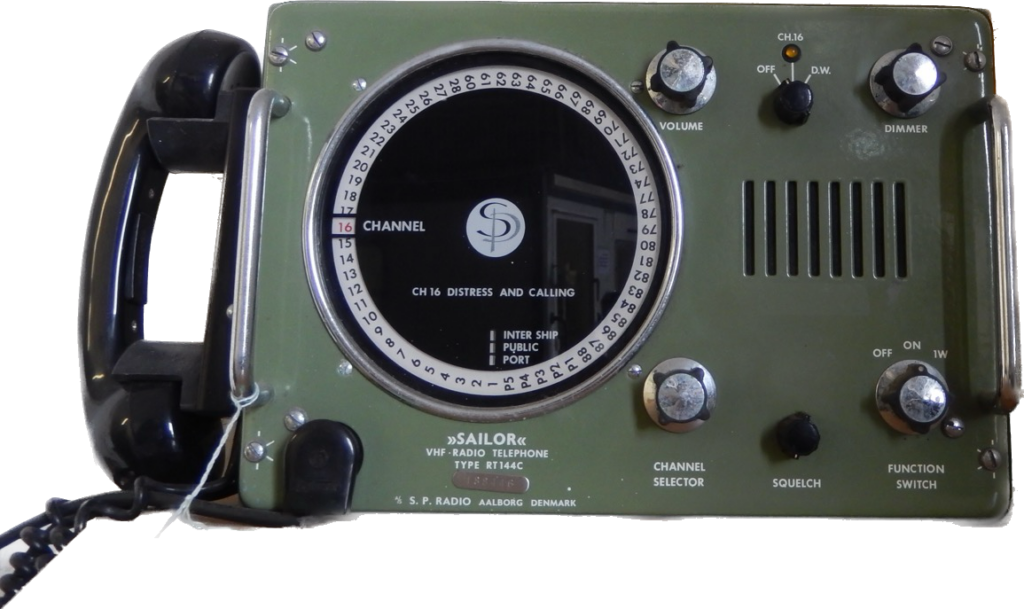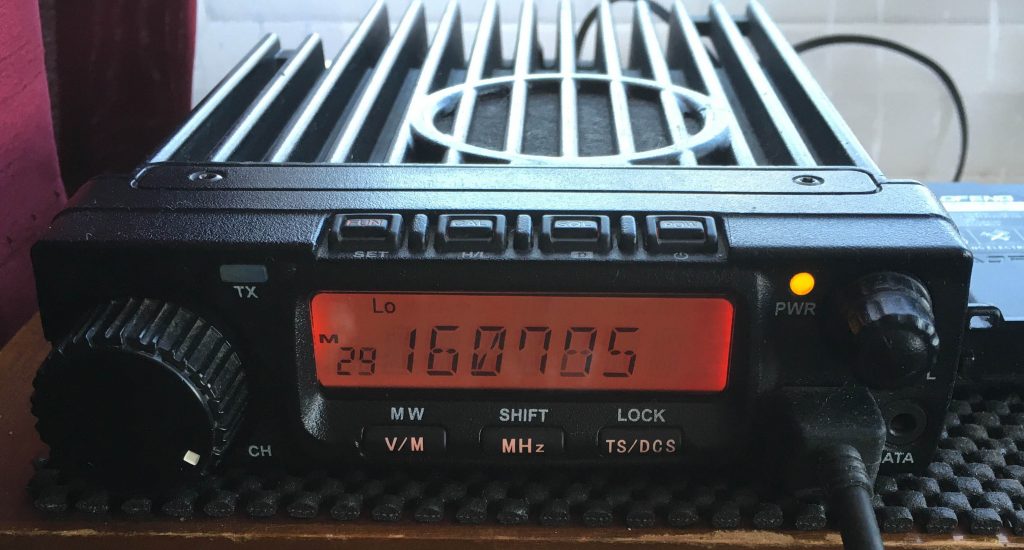There’s plenty of VHF marine activity to listen to. I use an Anytone AT588 radio, see photo, to scan over 60 marine channels. I use a Flowerpot antenna sited in the loft. Details for making the antenna can be found here. There’s a useful frequency list here.
Update – 24th June 2020.
I now have a proper marine antenna in the loft and it’s made all the difference. I believe it’s a 5/8 wave. It’s a heavy fibreglass tube at least 2 inches diameter and about 5 feet long.
I’m lucky to have Shoreham harbour a few miles to the east and Solent Coastguard to the west. With the English Channel being the busiest shipping lane in the world, there’s always something going on. But, you’re not going to hear a great deal if you only monitor channel 16. I’ve heard lots of traffic on channels 10, 77, 31, 36, 9, 12… You will need to scan almost all the marine channels, make a note of the busy ones, and then skip the ones with no traffic.
I’ve just spent half an hour naming each channel with the marine channel numbers. So, 156.800MHz now reads CH16 on the display. By the way, there are also a few UHF marine channels worth listening to.
Marine HF Communications.
HF marine SSB radio is commonly used by ships and boats for long range communication. The system operates on frequencies between 1.6 and 30MHz.
HF marine SSB radio is an important means of communication for ships and boats that are operating in remote areas or far from shore. It allows for communication with other vessels, as well as with shore-based facilities such as coast guard stations, weather services, and emergency services.
One of the advantages of HF marine SSB radio is that it has a long range, typically several hundred nautical miles, depending on atmospheric conditions and antenna height. This makes it ideal for communication over large distances, particularly when other forms of communication, such as satellite or cell phone, are not available or reliable.
Another advantage of HF marine SSB radio is that it is relatively inexpensive and easy to install and operate. Most modern HF marine SSB radios have advanced features such as digital signal processing, automatic antenna tuning, and selective calling, which make them more efficient and user-friendly.
However, there are some challenges associated with HF marine SSB radio. The system is susceptible to interference from other radio signals, particularly on crowded frequencies, and atmospheric conditions can affect signal strength and clarity. Additionally, HF marine SSB radio requires specialized training and a license to operate.
HF marine radio is important for communication at sea and is used by thousands of ships and boats worldwide.
There’s a comprehensive list of HF marine frequencies here.


